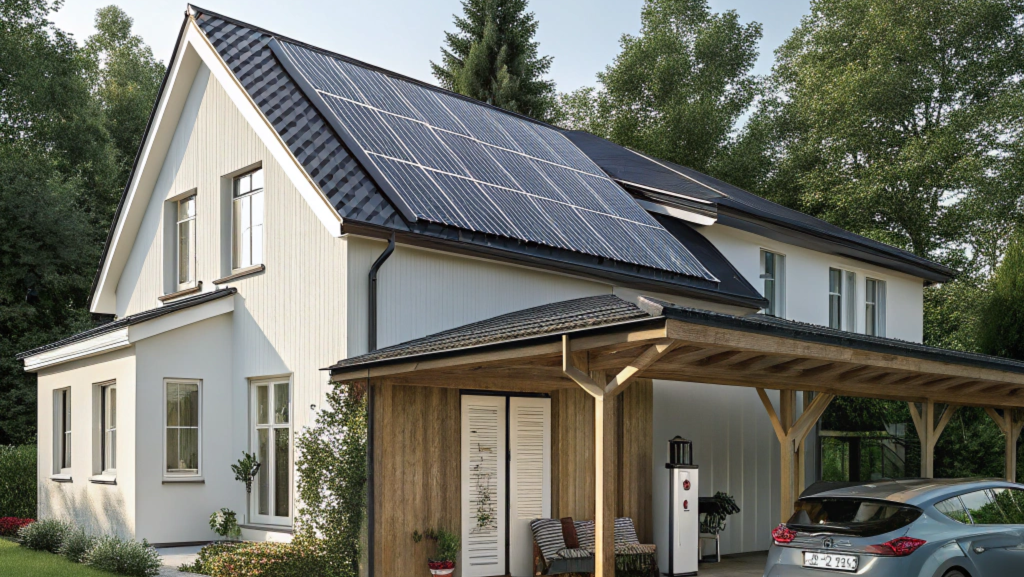As an emerging photovoltaic technology, the research status of organic solar panels (OPVs) shows a trend of technological breakthroughs and industrialization advancing simultaneously. However, they still face core challenges such as efficiency, cost and stability. The following is a specific analysis:
First, technological breakthroughs: efficiency improvement and structural innovation
Breakthrough in photoelectric conversion efficiency
By 2025, the photoelectric conversion efficiency of all-organic solar cells had risen to 8.7%, a significant increase from the previous record of 4%, marking a step towards practical application of this technology. The efficiency of perovskite/organic tandem cells has reached 26.4% (certified value 25.7%), making it the current record holder for the efficiency of tandem cells. This breakthrough is mainly attributed to the optimization of material design and device structure. For instance, by introducing flexible oligomer receptor materials, the efficiency of flexible organic batteries has approached 18%, while the mechanical stability has been significantly enhanced.
Structural innovation promotes efficiency upgrading:
Tandem battery technology, by connecting materials with different bandgaps in series, broadens the spectral response range and becomes a key path to improve efficiency. For instance, the laminated design of wide bandgap perovskite and organic materials enables the open-circuit voltage to reach 1.36V, effectively reducing voltage loss. In addition, the development of new active layer materials such as small molecules and conjugated polymers has further enhanced the carrier mobility and light absorption capacity.
Second, industrialization progress: Market expansion and cost optimization
Market size and demand growth
The global organic photovoltaic market size is expected to exceed 1 billion US dollars in 2025, with an annual growth rate of over 45%. As a major market, China’s OPV market share reached 6% in 2019, an increase of 5 percentage points compared with 2015. Policy promotion and the surging demand for distributed photovoltaic power are the main driving forces. For instance, the “13th Five-Year Plan” clearly supports the development of clean energy, providing a broad application space for OPV.
The cost advantage is gradually emerging:
The solution processing characteristics of organic materials make them have the potential for low cost. Currently, the cost of OPV components is approximately 30% lower than that of crystalline silicon cells, and the production process has lower energy consumption and less pollution. For instance, the cost of all-perovskite tandem cells is reduced by half compared to crystalline silicon cells, further highlighting their economic viability. With the advancement of large-scale production, costs are expected to further decline.
Third, core challenges: efficiency, stability and commercialization bottlenecks
Efficiency and stability need to be improved:
Although the laboratory efficiency has exceeded 26%, the efficiency of commercial products is still less than 15%, making it difficult to compete with traditional technologies. In addition, organic materials are susceptible to environmental factors such as humidity and oxygen, which leads to a shortened lifespan of the devices. For instance, the lifespan of early OPV devices was only a few thousand hours, far lower than the 25-year warranty period of crystalline silicon cells.
Large-scale production and supply chain challenges:
The purity control of organic materials and the large-area thin film deposition process remain the key factors restricting industrialization. For instance, although solution printing technology is suitable for flexible production, it is difficult to ensure uniformity over large areas. Furthermore, core raw materials (such as high-purity organic semiconductors) rely on imports, and the autonomy and controllability of the supply chain are insufficient.
Fourth, Future Direction: Application expansion and technology integration
Diversified application scenarios:
The flexible and lightweight characteristics of OPV give it unique advantages in fields such as Building Integration (BIPV), wearable devices, and flexible electronics. For example, transparent OPVs can be integrated into window glass to achieve dual functions of power generation and lighting. Flexible OPV films can be applied in outdoor billboards, backpacks and other scenarios, expanding the application boundaries of photovoltaic.
Interdisciplinary technology integration
The integration with technologies such as artificial intelligence and the Internet of Things will drive the development of OPV towards intelligence and efficiency. For instance, by optimizing the battery structure design and manufacturing process through AI, efficiency can be further enhanced. IoT sensors can monitor battery performance in real time, enabling predictive maintenance.
Policy and Capital-driven:
Globally, policies such as government subsidies and research and development fund support will continue to drive the development of OPV. For instance, China’s 14th Five-Year Plan explicitly states that it will accelerate technological innovation in new energy and provide financial and market guarantees for OPVs. Meanwhile, the capital market’s preference for green technologies will also accelerate the transformation of technological achievements.


